In fig., a man true mass M is standing on a weighing machine placed in a cabin. The cabin is joined by a string a body of mass m. Assuming no friction, and negligible mass of cabin and weighing machine, the measured mass of man is (normal force between the man and the machine is proportional to the mass)
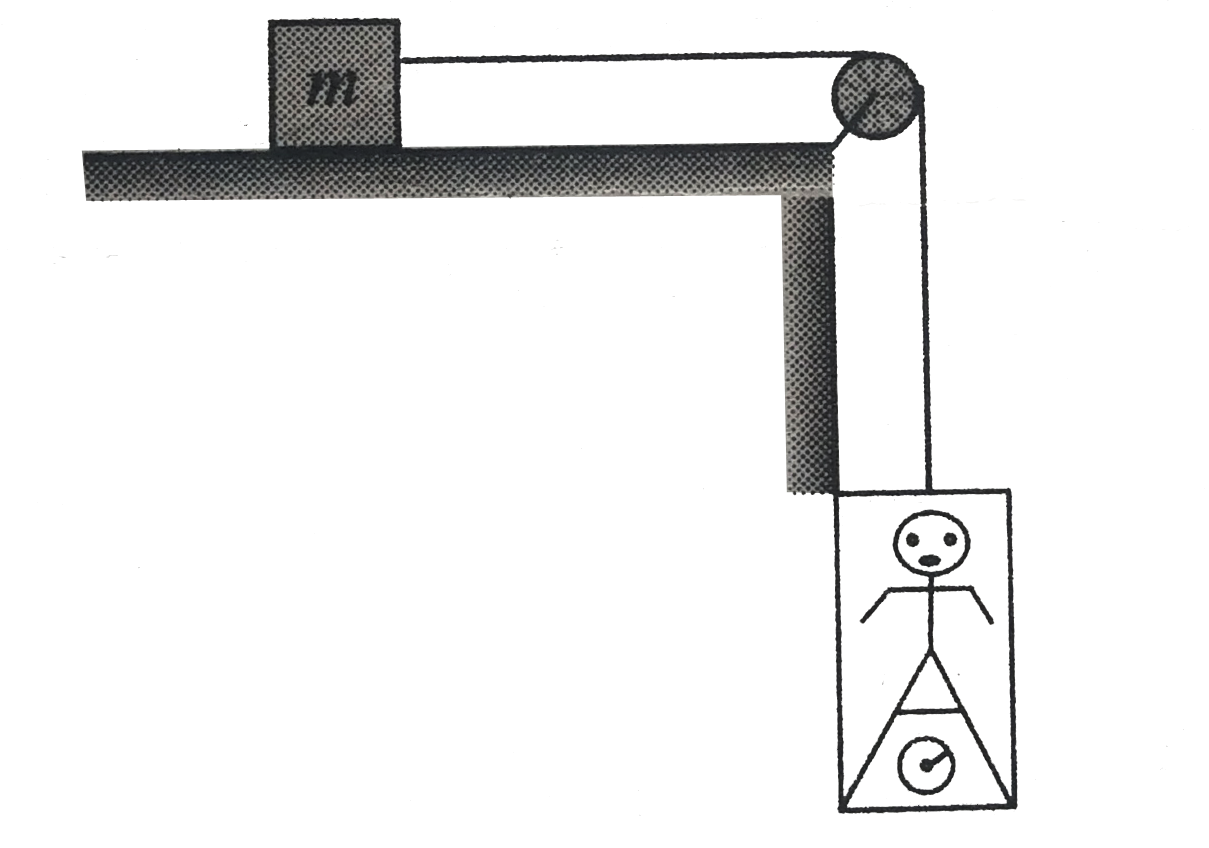
The measured mass of man is Mm(M+m)
The acceleration of man is mg(M+m).
The acceleration of man is Mg(M+m).
The measured mass of man is M
The correct Answer is:A, C
Mg−T=Ma ..(i)
T=ma ..(ii)
Solving Eqs. (i) and (ii) , a=MgM+m
FBD of man,
Mg−N=Ma⇒N=Mmg(M+m).
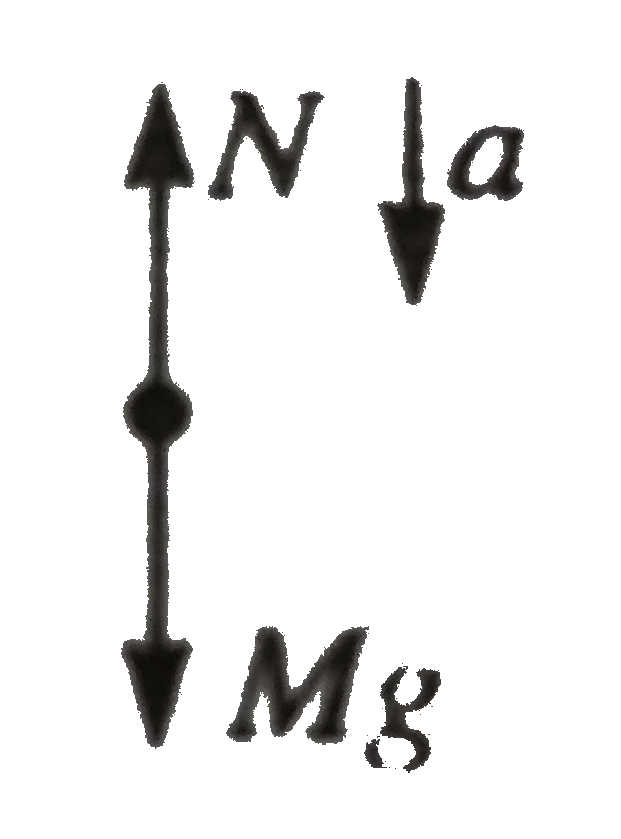
Topper's Solved these Questions
- BOOK - CENGAGE PHYSICSCHAPTER - NEWTON'S LAWS OF MOTION 1EXERCISE - Assertion-reasoning15videos
NEWTON'S LAWS OF MOTION 1
- BOOK - CENGAGE PHYSICSCHAPTER - NEWTON'S LAWS OF MOTION 1EXERCISE - Linked Comperhension46videos
NEWTON'S LAWS OF MOTION 1
- BOOK - CENGAGE PHYSICSCHAPTER - NEWTON'S LAWS OF MOTION 1EXERCISE - Single Correct76videos
NEWTON'S LAWS OF MOTION 1
- BOOK - CENGAGE PHYSICSCHAPTER - MISCELLANEOUS VOLUME 2EXERCISE - INTEGER_TYPE10videos
MISCELLANEOUS VOLUME 2
- BOOK - CENGAGE PHYSICSCHAPTER - NEWTON'S LAWS OF MOTION 2EXERCISE - Integer type1videos
NEWTON'S LAWS OF MOTION 2
Similar Questions
A man of mass 60kg is standing on a weighing machine kept in a box of mass 30kg as shown in the diagram If the man man ages to keep the box stationary, find the read ing of the weighing machine
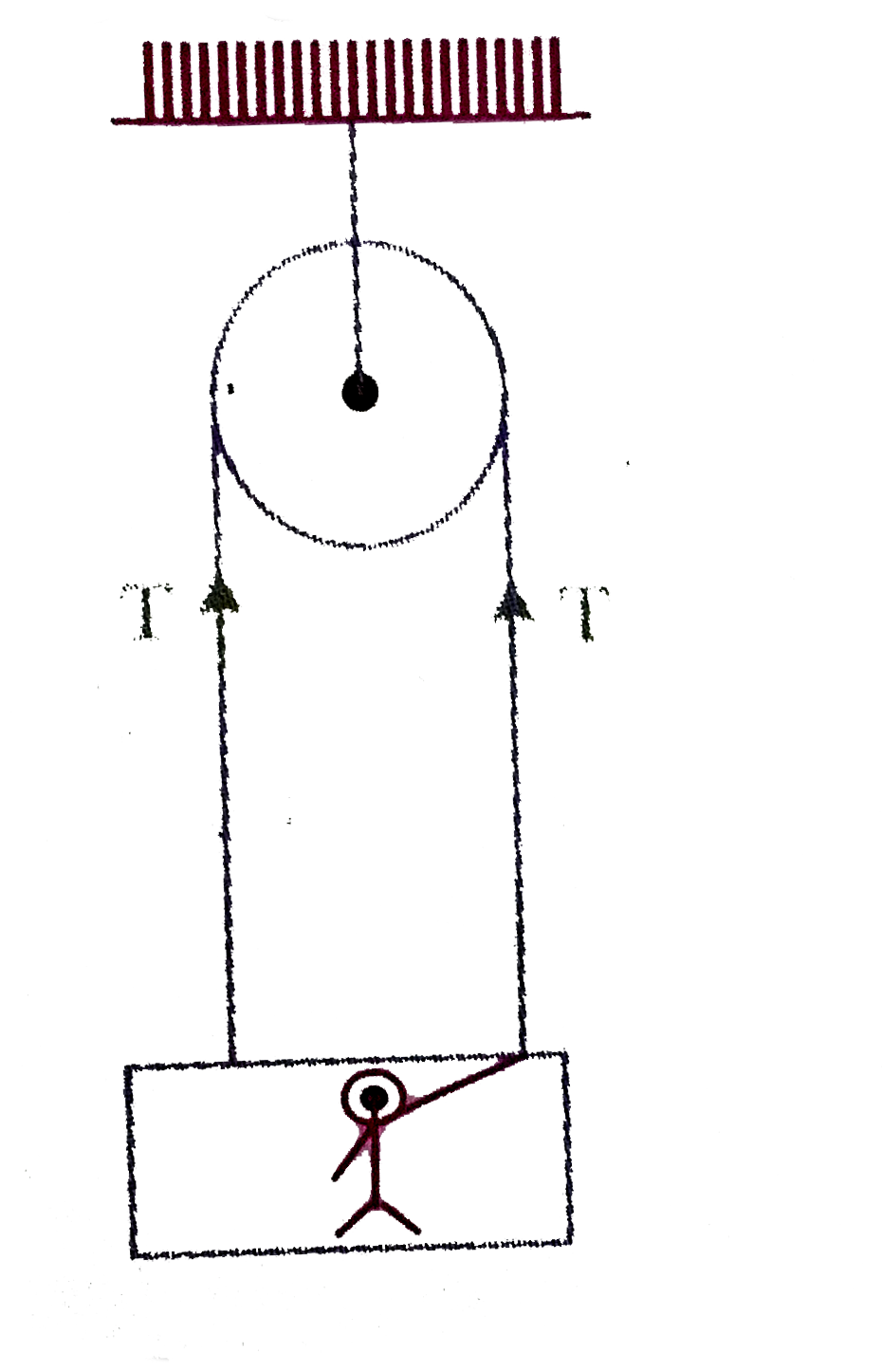 .View Solution
.View SolutionA man of mass 60 kg is standing on a weighing machine kept in a box of mass 30 kg as shown in the diagram. If the man manages to keep the box stationary, find the reading of the weighing machine.
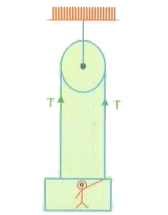 View Solution
View Solution
Knowledge Check
- Question 1 - Select One
A man of mass 70kg stands on a weighing scale in a lift which is moving:
Aupwards with a uniform speed of ms−1Bdownwards with a uniform acceleration of 5ms−2Cupwards with a uniform acceleration of ms−2. What would be the readings on the scale in each case?DWhat would be the reading if the lift mechanism falled and it hurted down freely under gravity?
You find your mass to be 42 kg on a weighing machine. Is your mass more or less than 42 Kg?
View SolutionYou find your mass to be 42 kg on a weighing machine. If your mass more or less than 42 Kg?
View SolutionYou find your mass to be 42 kg on a weighing machine. Is your mass more or less than 42 Kg?
View SolutionA 80 kg man is standing on a weightless weighing machine as shown in the figure if mass of hanging block is 40 kg, then reading of weighing machine, is
 View Solution
View SolutionA man of mass 60kg is standing on a weighing machine placed in a lift moving with velocity 'v' and acceleration 'a' as shown in figure. Calculate the reading of weighing machine in following situation : (g=10m/s2)
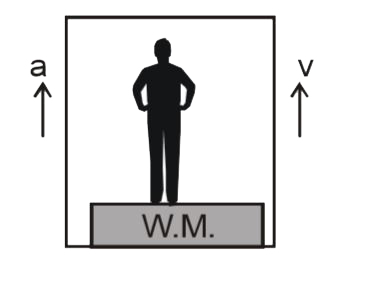
a=0, v = 0View SolutionA man of mass 60 kg is standing on a weighing machine (2) of mass 5kg placed on ground. Another identical weighing machine is placed over man’s head. A block of mass 50kg is put on the weighing machine (1) . Calculate the readings of weighing machines (1) and (2) .
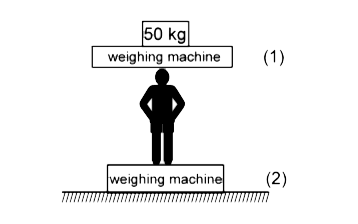 View Solution
View Solutionshows a man of mass 60 kg standing on a light weighing machine kept in a cabin of mass 40 kg The cabin is hanging from a pulley fixed to the ceiling through a light rope, the other end of which is held by the man himself if the man manages to keep the cabin at rest, what is the weight shown by the machine? What force should he exert on the rope to get his correct weight on the machine?
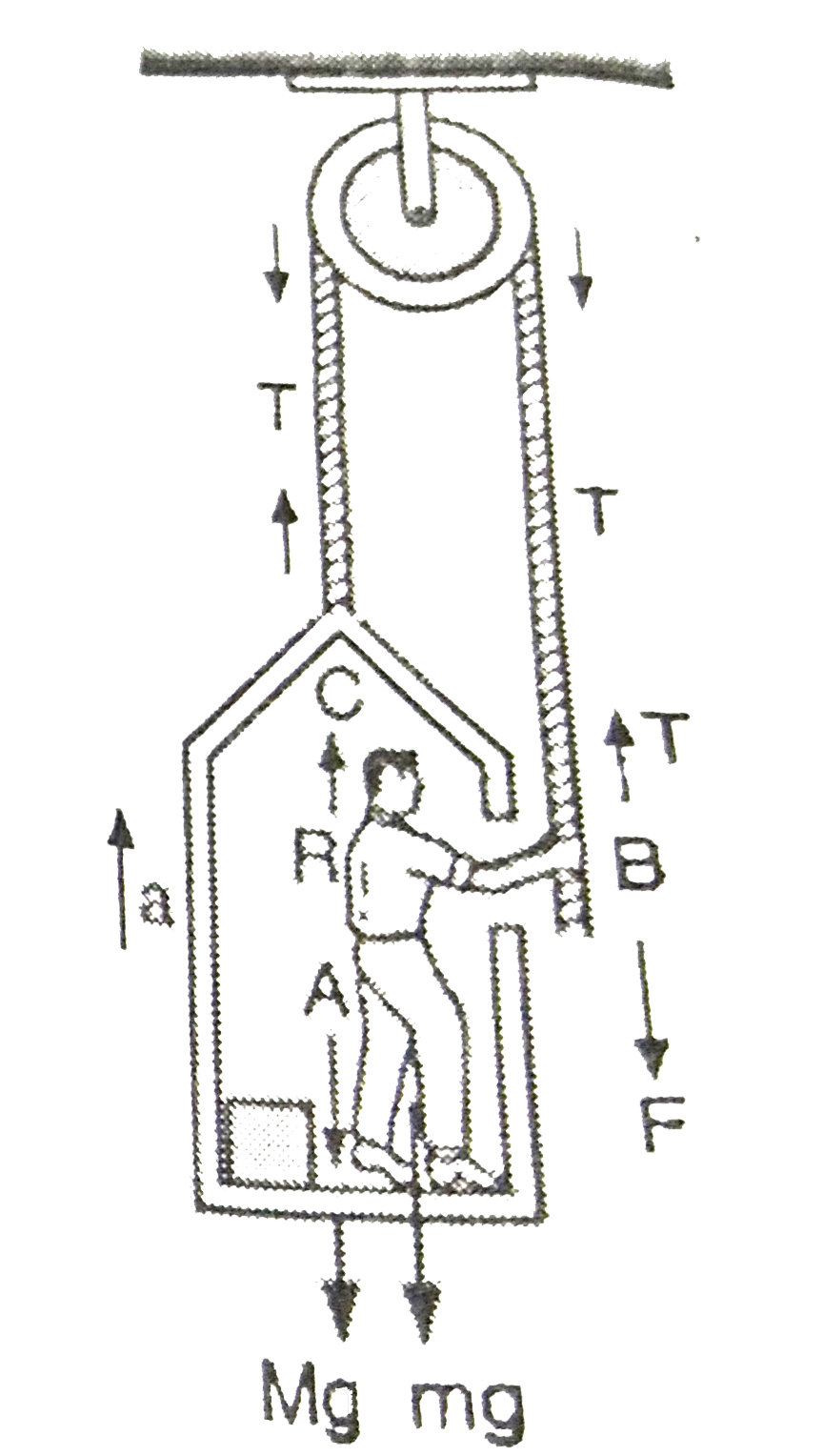 View Solution
View Solution

